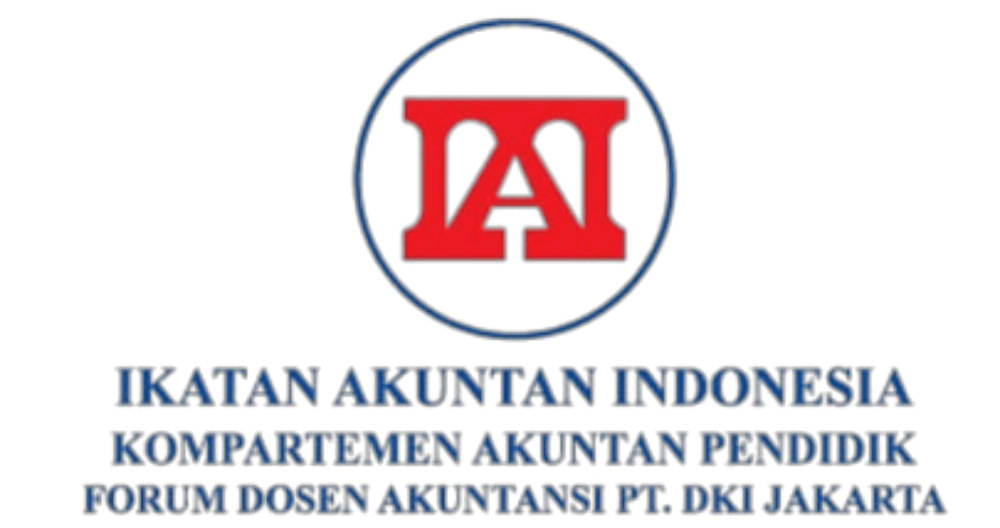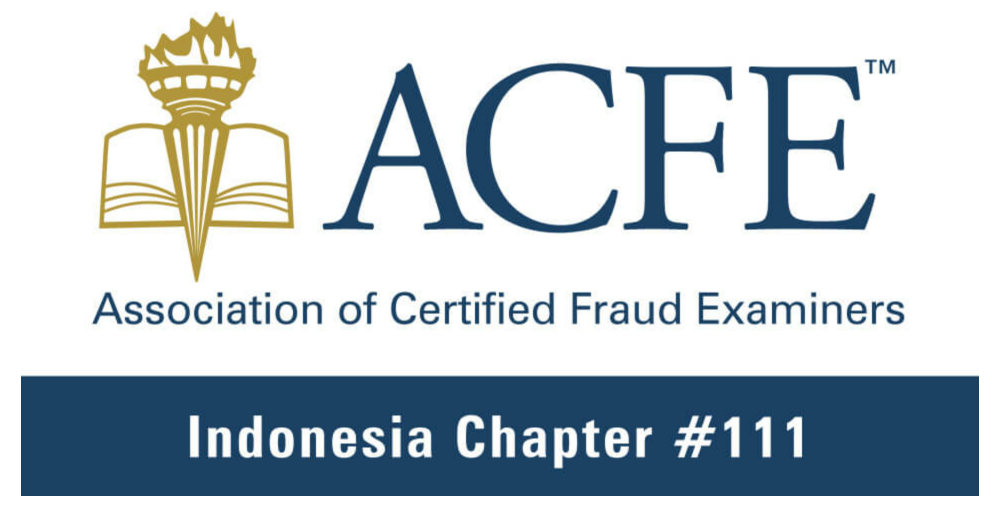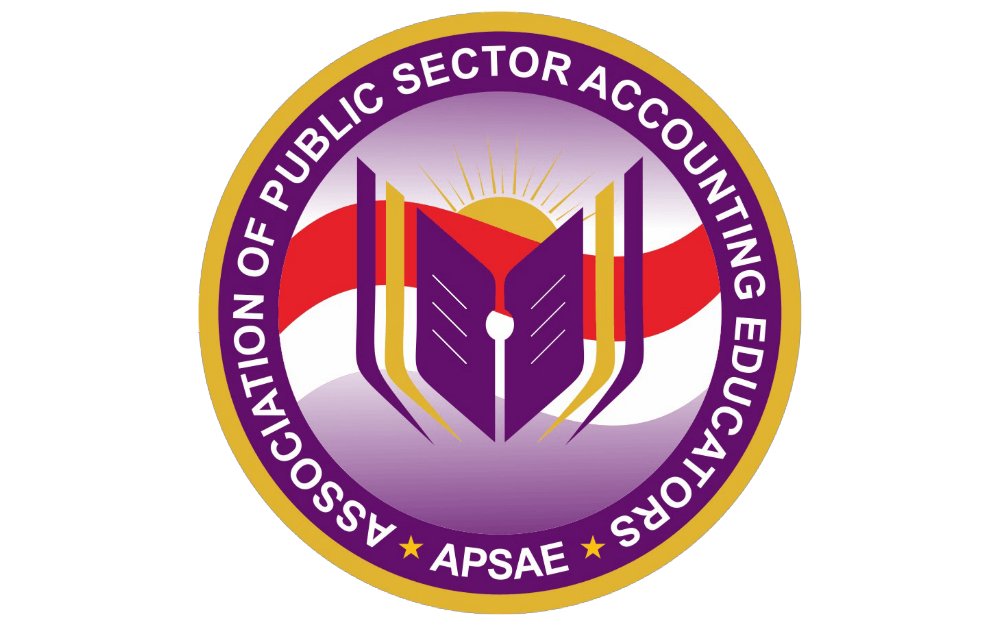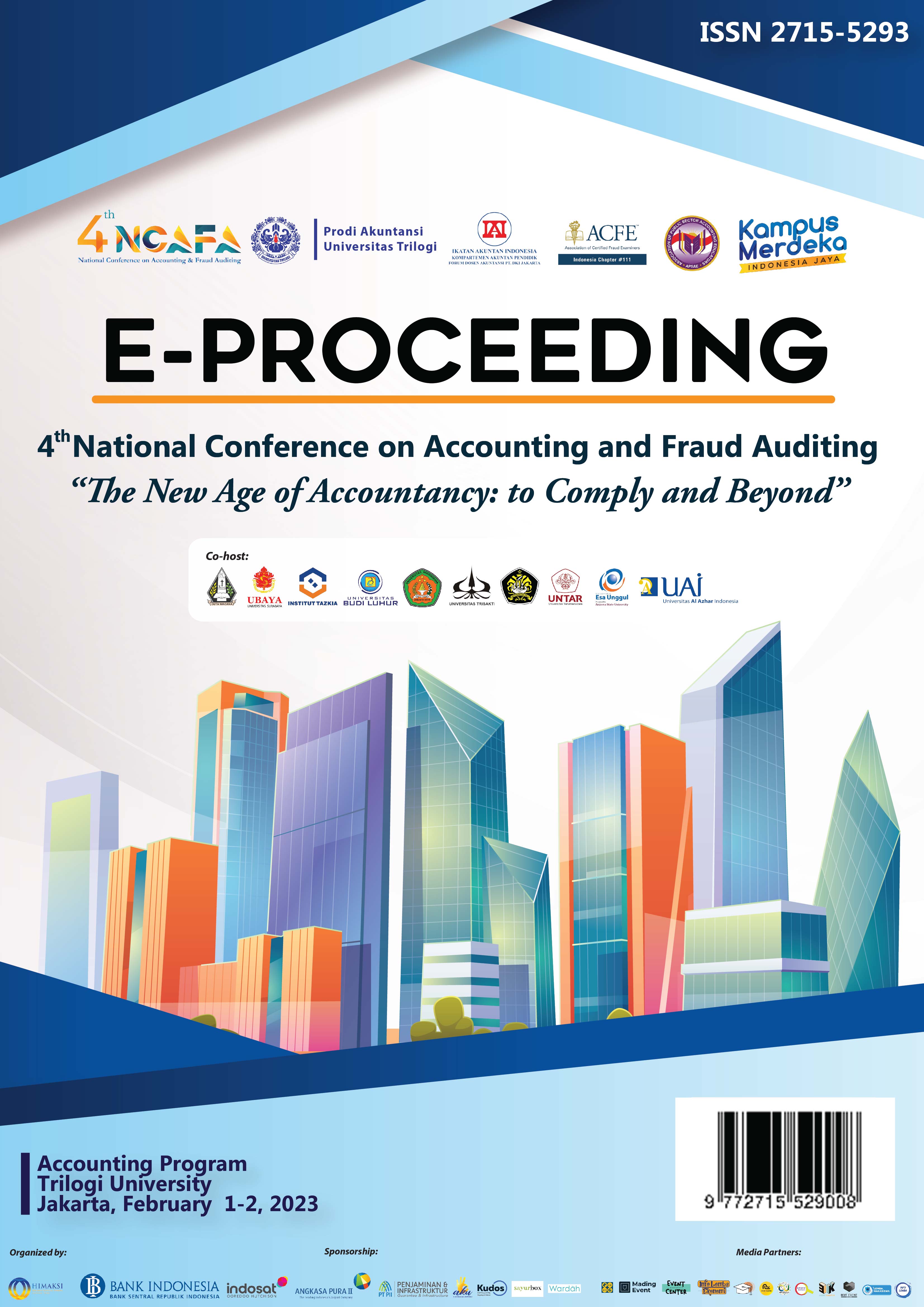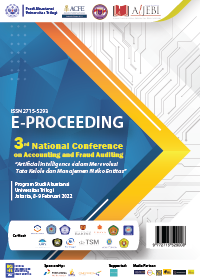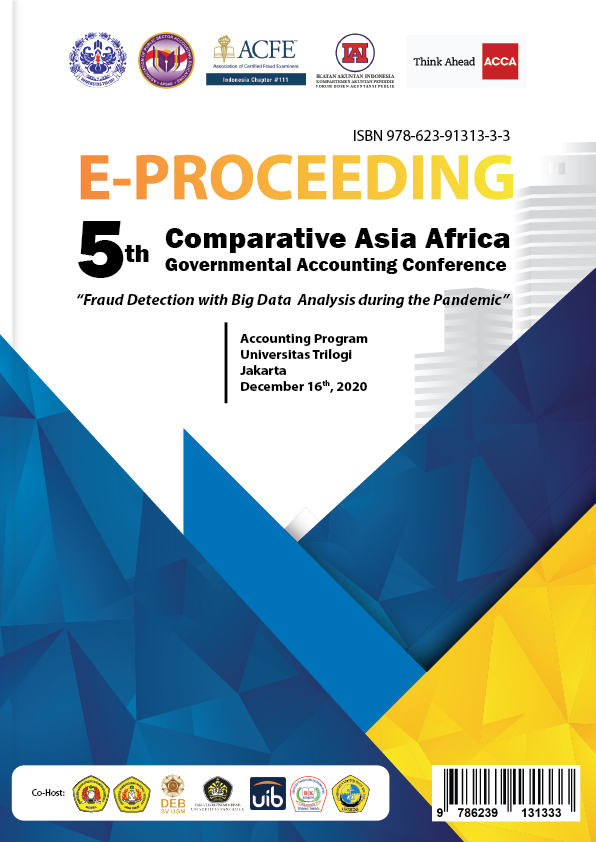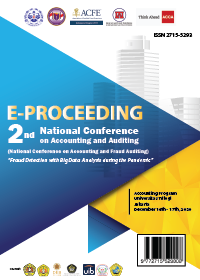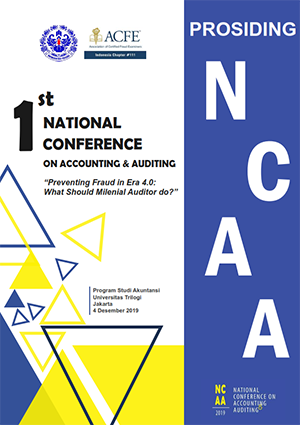Computerization and Its Provision to Internal Control - The Users' Perspective in Regional State Owned Water Enterprise
Abstract
State Owned Water Company, as one of the Regional State Owned Company (BUMD) of Jombang Regency, whose business is engaged in the distribution of clean water for the general public. At the local public water company, it uses Information Technology Systems (STI), one of which is the SIKOMPAK (Computerized Accounting Information System) software program. Proper use of STI and supported by the expertise of the personnel or users who operate it so as to increase and support the productivity of the performance of the company and the individual concerned as well as support attitudes towards system use. Therefore, in line with the achievement of company goals, it is necessary to apply the use of appropriate technology so that it is considered very influential and generally used in information technology systems, namely the Technology Acceptance Model (TAM) and the theory of planned behavior (TPB). This study uses the theory of planned behavior or TPB and the Technology Acceptance Model / TAM to analyze the relationship between the perceived usefulness of attitudes towards system use, subjective norms for attitudes towards system use, and perceived behavioral control over attitudes toward system use. In data analysis using SEM-PLS (Partial Least Square) and data processed using Warp Pls 5.0 tools. The results of this study state that 1). The perceived usefulness of interest in information systems behavior attitudes has a positive effect on attitudes to system use. 2). Subjective norms have no positive effect on attitudes to system use. 3). Perceived behavior control has a positive effect on attitudes to system use.
Keywords: Information System Behavior, Internal Control, Regional State Owned Water Company
Full Text:
PDFReferences
A. Budhisulistyawati, Y. T. Muryanto, and A. Sri, “STRATEGI PENGELOLAAN BADAN USAHA MILIK DAERAH (BUMD) PERSERO UNTUK MEWUJUDKAN PRINSIP TATA KELOLA PERUSAHAAN YANG BAIK,” Priv. Law, vol. 3, no. 2, pp. 56–66, 2015.
R. S. H. Bako, “PERMASALAHAN HUKUM ATAS BENTUK BADAN HUKUM PADA BADAN USAHA MILIK DAERAH,” J. Kaji., vol. 15, no. 4, pp. 751–781, 2010.
I. A. Azre, “Analisis Good Corporate Governance (GCG) Pada Badan Usaha Milik Daerah (BUMD) Provinsi Sumatera Barat (Studi Kasus PT Grafika Jaya Sumbar),” J. Adm. dan Kebijak. Publik, vol. 2, no. 3, pp. 187–203, 2017.
Suharyono, “The Effect of Accountability, Transparency, and Supervision on Budget Performance by Using The Concept of Value for Money in Regional Business Enterprises (BUMD) of Riau Province,” Int. J. Public Financ., vol. 4, no. 2, pp. 236 – 249, 2019, doi: 10.30927/ijpf.584834.
BPKP, “Peningkatan Kinerja Melalui Penerapan Sistem Pengendalian Intern pada PDAM se-Provinsi Jambi,” 2018. http://www.bpkp.go.id/berita/read/19477/0/Peningkatan-Kinerja-Melalui-Penerapan-Sistem-Pengendalian-Intern-pada-PDAM-se-Provinsi-Jambi.bpkp (accessed Nov. 27, 2020).
N. Melville, K. Kraemer, and V. Gurbaxani, “Information Technology and Organizational Performance: An Integrative Model of IT Business Value,” MIS Q., vol. 28, no. 2, pp. 283–322, 2004, doi: 10.2307/25148636.
T. Jacks, P. Palvia, and R. Schilhavy, “A framework for the impact of IT on organizational performance,” Bus. Process Manag. J., vol. 07, no. 05, pp. 846–870, 2011, doi: 10.1108/14637151111166213.
L. Hladchenko, “Government Financial Accountability and Transparency in the Digital World,” 2016.
International Federation of and Accountants, “Evaluating and Improving Internal Control in Organizations,” New York City, 2012. [Online]. Available: https://www.ifac.org/system/files/publications/files/Evaluating and Improving Internal Control in Organizations - updated 7.23.12.pdf.
L. Graham, Internal Control Audit and Compliance - Documentation and Testing Under the New COSO Framework, 1st ed. New Jersey: John Wiley & Sons, Inc, 2015.
G. Sarens and I. De Beelde, “Internal auditors’ perception about their role in risk management,” Manag. Audit. J., vol. 21, no. 1, pp. 63–80, 2006.
M. Workman, W. H. Bommer, and D. Straub, “Security lapses and the omission of information security measures: A threat control model and empirical test,” Comput. Human Behav., vol. 24, no. 6, pp. 2799–2816, 2008, doi: 10.1016/j.chb.2008.04.005.
C. Vroom, R. Von Solms, P. E. Technikon, P. Elizabeth, and S. Africa, “Towards information security behavioural compliance,” Comput. Secur., vol. 23, no. 3, pp. 191–198, 2004, doi: 10.1016/j.cose.2004.01.012.
J. M. Stanton, K. R. Stam, P. Mastrangelo, and J. Jolton, “Analysis of end user security behaviors,” Comput. Secur., vol. 24, no. 2, pp. 124–133, 2005, doi: 10.1016/j.cose.2004.07.001.
G. V. Post and A. Kagan, “Evaluating information security tradeoffs: Restricting access can interfere with user tasks,” Comput. Secur., vol. 26, no. 3, pp. 229–237, 2007, doi: 10.1016/j.cose.2006.10.004.
S. Pahnila, M. Siponen, and A. Mahmood, “Employees’ Behavior towards IS Security Policy Compliance,” in Proceedings of the 40th Annual Hawaii International Conference on System Sciences (HICSS’07), 2007, pp. 3–6, doi: 10.1109/HICSS.2007.206.
B. Bulgurcu, H. Cavusoglu, and I. Benbasat, “INFORMATION SECURITY POLICY COMPLIANCE : AN EMPIRICAL STUDY OF RATIONALITY-B ASED BELIEFS,” MIS Q., vol. 34, no. 3, pp. 523–548, 2010.
J. D. Arcy, A. Hovav, and D. Galletta, “User Awareness of Security Countermeasures and Its Impact on Information Systems Misuse : A Deterrence Approach,” no. December 2015, 2009, doi: 10.1287/isre.1070.0160.
A. Johnston and M. Warkentin, “Fear appeals and information security behaviors: an empirical study,” MIS Q., vol. 34, pp. 549–566, 2010.
J. Spears and H. Barki, “User participation in information systems security risk management,” MIS Q., vol. 34, pp. 503–522, 2010.
P. Ifinedo, “Understanding information systems security policy compliance: An integration of the theory of planned behavior and the protection motivation theory,” Comput. Secur., vol. 31, no. 1, pp. 83–95, 2012, doi: 10.1016/j.cose.2011.10.007.
I. Ajzen, “The Theory of Planned Behavior,” in The Theories of Social Psychology, P. A. M. Van Lange, A. W. Kruglanski, and E. T. Higgins, Eds. Los Angeles, London, New Delhi, Singapore, Washington DC: SAGE, 2012, p. 438.
F. D. Davis, “Perceived Usefulness, Perceived Ease of Use, and User Acceptance of Information Technology,” MIS Q., vol. 13, no. 3, pp. 319–340, 1989.
J. D. Wall and M. Warkentin, “Information & Management Perceived argument quality ’ s effect on threat and coping appraisals in fear appeals : An experiment and exploration of realism check heuristics,” Inf. Manag., vol. 56, no. 8, p. 103157, 2019, doi: 10.1016/j.im.2019.03.002.
T. Herath and R. Rao, “Protection motivation and deterrence: A framework for security policy compliance in organisations,” Eur. J. Inf. Syst., vol. 18, no. 2, pp. 106–125, 2009, doi: 10.1057/ejis.2009.6.
DOI: https://doi.org/10.31326/.v2i2.793
Refbacks
- There are currently no refbacks.

